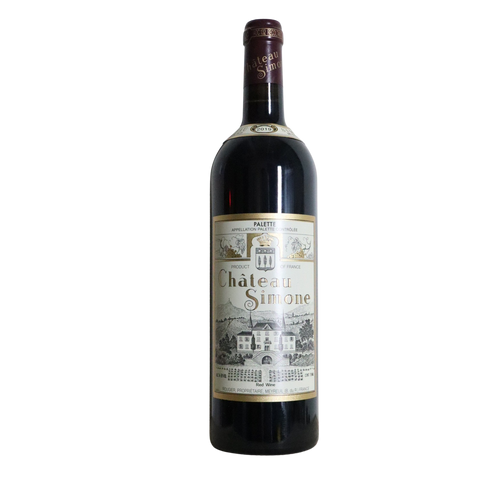
2019 Château Simone Palette Rouge, Provence, France
This is a full-bodied wine with complex notes of dark fruit and savory herbs from the surrounding forests and elevation of Mount Sainte Victoire.
There are 6 units left in stock.
ABOUT THIS WINE
Wines of great distinction, with subtle aromas and an extremely complex bouquet permeating through a deep ruby-red colour. Robust, rich in noble tannins, these wines have good aging potential. The wine is sourced from 50 year old vines with the following varietal percentages: 45% Grenache, 35% Mourvèdre, and 5% Cinsault with 20% coming from Syrah, Castet, Monaquin, Carignan and various Muscatel.
ABOUT THIS PRODUCER
Our story illustrates the meeting of the vine with a line of winegrowers on an exceptional terroir. Located four kilometers from Aix-en-Provence in the town of Meyreuil, former bastide of the Grands Carmes d'Aix, Château Simone has been owned by the Rougier family since 1830.
The ‘Palette’ designation of origin is situated in the heart of the French Provence, a few kilometres east of the town of Aix en Provence. The vineyard covers approximately fifty hectares strictly delimited on soils composed of Langesse limestone. The vine stocks grow essentially on the hillsides facing famous mount Sainte Victoire and enjoy a unique microclimate. The Appellation applies to white, red and rosé wines which main varietals include: Clairette, white Grenache, Bourboulenc for white wines, and Grenache, Mourvèdre, Cinsault for red and rosé. The grapes are handpicked and vinification is necessarily carried out within the delimited area. Recognition of Palette as an AOC (on April 28th 1948) is an extension of the recognition by French body INAO of the AOC for Château Simone obtained by Jean Rougier on July 21st 1946.
Its location on the north-facing slopes of the Montaiguet massif in a natural bowl-shaped formation protected from the winds and crossed by the Arc river give it a special microclimate. It is influenced by the biodiversity of the nearby forest, the humidity coming from the river with its mass of greenery, its exposure and the fact that the force of the winds is broken. The soil consists essentially of limestone scree formed in lakes in the Tertiary Era combined with clays, pebbles and gravel.
